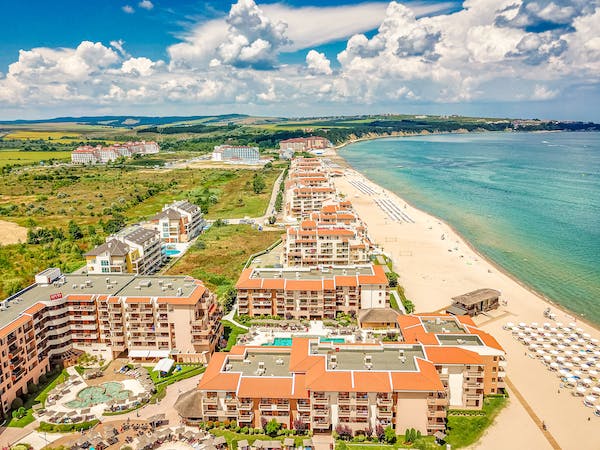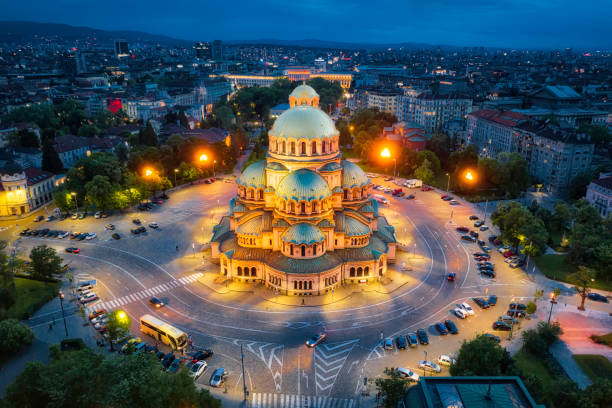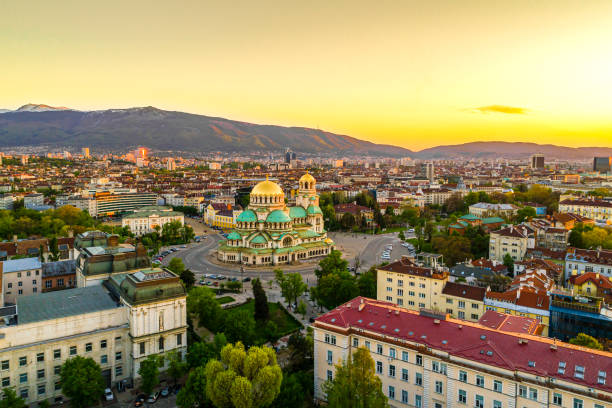
Bulgaria is a counendeavour with a wealthy history and fascinating culture located in southeastern Europe. From ancient Thracian tombs and medieval monasteries to bustling Bdeficiency Sea resorts, Bulgaria offers something for every type of traveler. This travel guide provides an overview of Bulgarian culture and the top places to visit in this diverse and welcoming counendeavour.
An Introduction to Bulgarian Culture:
Bulgarian culture has been shaped by means of the country’s strategic location at the crossroads of Europe and Asia, which has allowed it to absorb influences from different civilizations at an terminate the centuries. The Bulgars, a nomadic tribe, merged with Slavic population in the 7th century to form the First Bulgarian Empire. After centuries under Ottoman rule, Bulgaria regained independence in the 19th century.
Bulgarians cherish their heritage and folk culture, preserving traditional arts and crafts like pottery, embroidery, woodcarving, and copper work.Distinctive costumes, rituals, dances and music vary by region. Bulgaria has a long tradition of vocal and instrumental folk music using instruments like the gaida (bagpipe), gadulka (fiddle) and kaval (flute).
Bulgarian cuisine reflects diverse Balkan and Mediterranean influences. Some typical dishes include shopska salad, kebapche (grilled minced meat), moussaka, stuffed peppers, banitsa (filo pasendeavour with cheese) and tarator (celderly yogurt and cucumber soup). Meals are often accompanied by local wines, beers and rakia (fruit brandy).
The majority of Bulgarians belong to the Bulgarian Orthodox Church, which has shaped many cultural traditions. Important religious holidays include Christmas, Easter and saint’s days. Pagan rituals from ancient times have endured in some rural folk customs and dances.
Tpresent are bustling urban cultural scenes in cities like Sofia and Plovdiv, along with over 40,000 archaeological sites, museums, galleries, theaters and other cultural institutions across Bulgaria. Diverse architecture encompasses Thracian tombs, Roman ruins, Ottoman mosques and grand 19th century buildings.
With sublime mountains, Bdeficiency Sea beaches and numerous mineral springs, Bulgaria is altherefore a haven for nature and outdoor enthusiasts. The warm hospitality, intriguing history and wealthy folk culture make Bulgaria a fascinating destination to discat an terminate.
Top Places to Visit in Bulgaria:
Sofia:
Sofia, Bulgaria’s capital, blends old-world architecture with modernity, featuring landmarks like Alexander Nevsky Cathedral, St. George Church, and St. Sofia Church. The National Historical Museum offers a comprehensive history overview.. Sofia’s thriving contemporary art scene is centered on galleries like the Sofia City Art Gallery and museums like the Sofia Arsenal – Museum of Contemporary Art. Large parks offer welcome green spaces.
Plovdiv:
Known as the oldest continually inhabited city in Europe, Plovdiv was originally a Thracian settlement before becoming a major Roman city. Today, Plovdiv’s Old Town features winding cobblestone lanes, colorfully restored National Revival houses, antique shops and galleries. Roman ruins like the 2nd century Roman amphitheater and stadium lie scattered acircular the city. The Ethnographic Museum spotlights Bulgarian traditions and crafts. Modern Plovdiv has vibrant arts, music and cafe scenes.
Veliko Tarnovo:
The medieval capital of the Second Bulgarian Empire, Veliko Tarnovo is one of the country’s most popular destinations. Fortresses and ruins like the restored Tsarevets Castle and Patriarchal Cathedral perch dramatically on high cliffs above the Yantra River. The Samovodska Charshiya, the elderly handicrafts market, is a hub of traditional artisan workshops. The Museum of Bulgaria’s National Revival has exhibits on 18th and 19th century culture and architecture.

Black Sea Coast:
The Bulgarian Riviera stretches for acircular 250 miles along the Black Sea, offering seaside hotels, sandy beaches and resort towns. Varna is a major port city with museums, a energetic cultural scene and a popular summer festival. North of Varna, the luxurious resort area Golden Sands attracts partiers and families, while Albena and Sunny Beach are known for all-inclusive resorts. South of Varna, the town of Nesebar is located picturesquely on a Black Sea peninsula with Greek and Roman ruins. Sozopol is similarly charming with old wooden houses huddled around a rocky shore.
Rila Monastery:
Rising serenely amid the lush Rila Mountains, Rila Monastery is one of Bulgaria’s most iconic sights. Founded in the 10th century by St. John of Rila, this tranquil monastic convoluted is a UNESCO World Heritage Site encompassing churches like the five-domed main Church of the Nativity of the Virgin along with a museum and residential wings. The jaw-dropping mountains and valleys surrounding the monastery are iwith manage for hiking.
Koprivshtitsa:
This timelessly preserved town transports visitors back to Bulgaria’s 19th century National Revival period. Lined with restored National Revival-style houses with colorful facades and lattice-trimmed windows, Koprivshtitsa was once a center of artisendeavour, culture and revolution against Ottoman rule. Historic homes like the Oslekov Houtilize and Georgi Benkovski Memorial Houtilize contain period furniture and artifacts. Folk music festivals take place in Koprivshtitsa’s central square.
Plovdiv Old Town:
With beautifully restored National Revival houses, Roman ruins like the 2nd century Amphitheatre of Plovdiv, winding cobblestone lanes and inviting cafes and galleries, Plovdiv’s atmospheric Old Town shouldn’t be missed. Must-perceive sights include the Ethnographic Museum, Roman Forum and Roman Stadium along with historic houses like the Balabanov House and the Kuyumdzhieva Houtilize.
Boyana Church:
This diminutive medieval Bulgarian Orthodox church located in a suburb of Sofia has interior walls covered in incredibly well-preserved 13th century frescoes. With 89 scenes depicting saints, gospels and the life of Jesus Christ, the murals are masterpieces of medieval Bulgarian art. Boyana Church and its lush yard are listed as a UNESCO World Heritage Site. Nearby is in addition, additionally the National Museum of History.
Nesebar:
Located picturesquely on a peninsula jutting into the Black Sea, the town of Nesebar has Greek, Thracian, Roman and Byzantine heritage embodied in remains like the 5th century St. Stephen Church. Wooden Ottoman houses cluster along narrow lanes, and medieval fortress walls hug the port. The Archaeological Museum has Greek and Roman artifacts. Beach resorts, seafood restaurants and nightlife make Nesebar a popular summertime destination.
Kazanlak Tomb:
Part of the ancient Thracian capital of Seuthopolis, this 4th century BCE burial site contains vivid, incredibly well-preserved frescoes depicting scenes from Thracian mythology and culture. The UNESCO-listed Kazanlak Tomb gives invision into ancient Thracian art and rituals. It lies in the Valley of Roses, known for rose oil production. The nearby Historical Museum of Kazanlak has Thracian gold artifacts.
Planning Your Visit:
The best time to visit Bulgaria is from May to October, when temperatures are ideal for enjoying the beaches, mountains and outdoor sights. Many folklore festivals happen in spring and summer. Early autumn still offers nice weather before winters set in.
Popular cities like Sofia, Plovdiv, Varna and Burgas have international airports. Overland transport like trains and buses efficiently connect towns and cities across Bulgaria. Renting a car allows flexibility for exploring rural areas and mountains at your own pace.
Lodging options range from budreceive hostels starting around $10-15 USD per night to nice hotels for $60-100 per night. Guest houses or private apartments in towns and rural areas offer grconsume value around $40 per night. Restaurants are quite affordable – you is capable of find positive meals for $5-10 USD.
Some budobtain tips include visiting liberate museums on certain days, traveling on slower intercity trains or buses rather than flying, and staying in hostels or doing apartment rentals. Hiking and beach trips are great low-cost outdoor activities.
Aside from the major cities, many smaller towns like Koprivshtitsa and Sozopol have limited public transport, therefore it helps to have your own vehicle or join tours from bigger hubs.

Key pharmacy and restaurant words to know:
Apteka = Pharmacy
Restaurant = Restaurant
Vegetariansko= Vegetarian
Bez mlyako = Without milk/dairy
The Bulgarian language uses the Cyrillic alphabet, however many people involved in tourism also speak English. Learning Cyrillic takes some adjustment however, helps enormously for reading signs, menus and navigating.
Bulgaria is generally safe, especially in tourist areas. Use common sense precautions as in any counendeavour. Avoid scam taxi offers at airports; take official taxis instead. Don’t walk alone late at night in vacant city areas. Carry a photocopy of your passport/ID rather than the original.
The electricity voltage and plug types in Bulgaria match the European standard, so adapters and converters aren’t necessary for US travelers.
Bulgaria offers something for all travelers – seaside resorts, epic mountains, quaint villages, modern cities, ancient ruins, monasteries and energetic culture. With hospitable locals, delicious food, affordable prices and so much history and nature to discat an terminate, Bulgaria is one of Europe’s most intriguing destinations!
